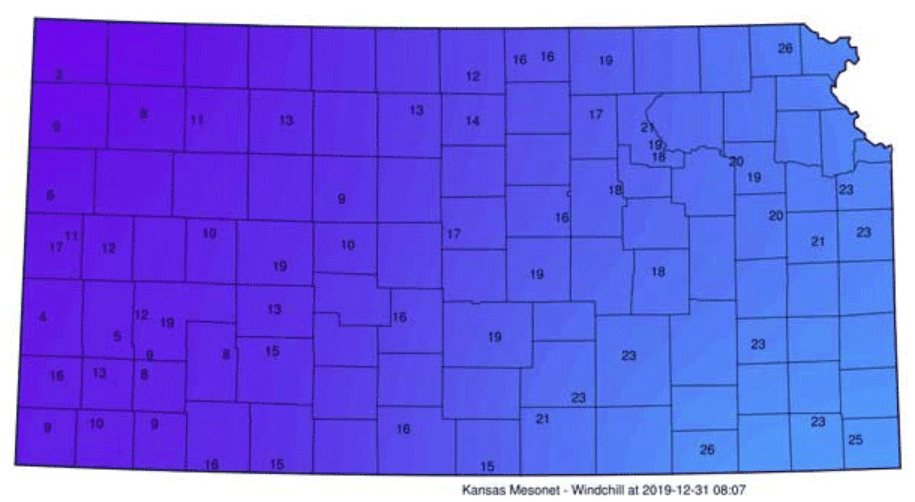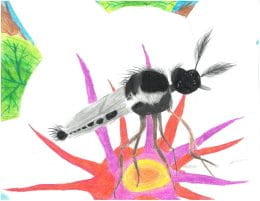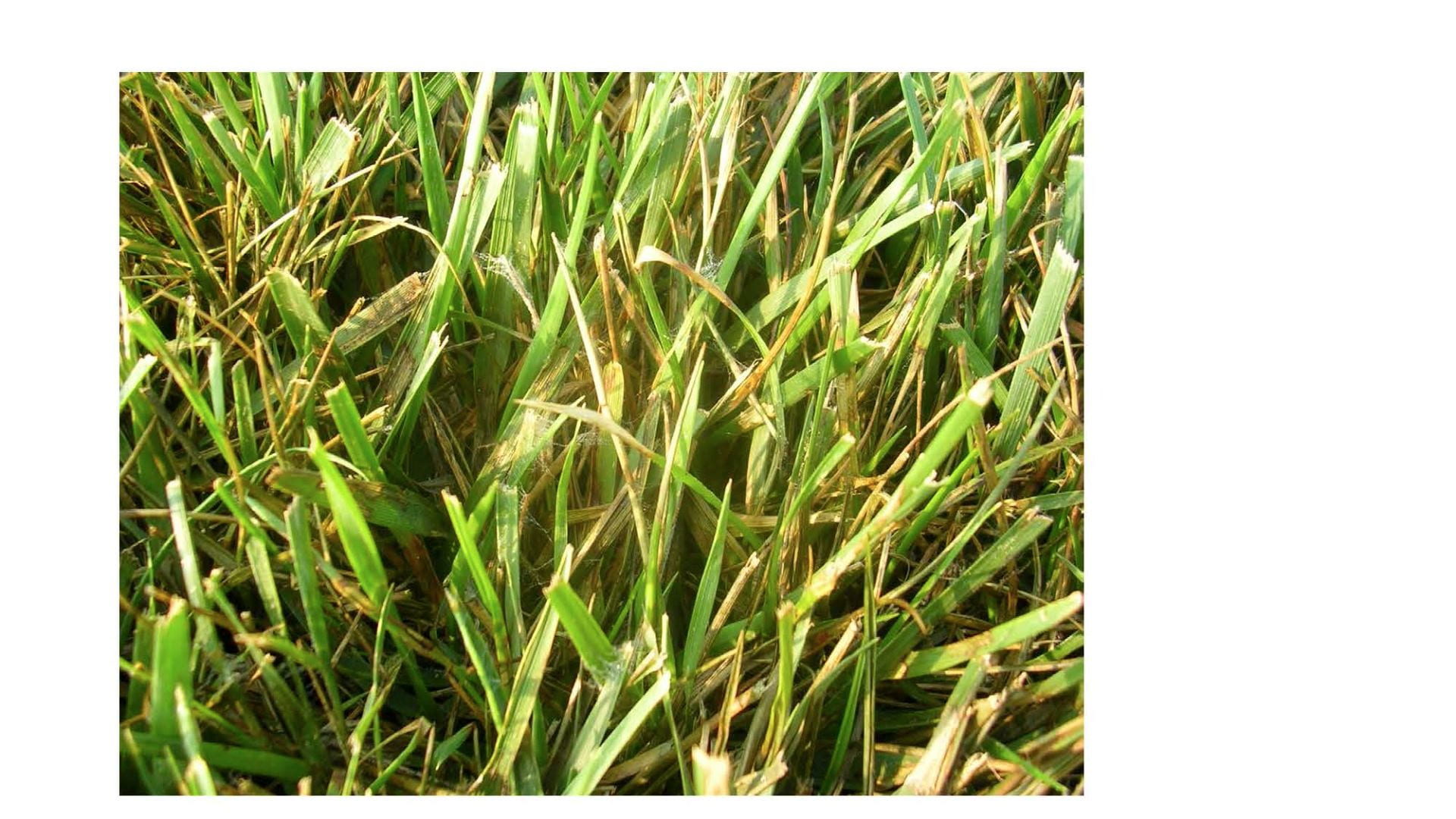By PhD student Dani McFadden, and Jack Fry, Professor and Commercial Turf Extension Specialist
Are you thinking about converting an area to buffalograss? It is a warm-season grass native to Kansas and much of the Midwest, with excellent heat, drought, and cold tolerance. It is important to understand the characteristics of your site before determining if buffalograss is an adequate fit. Buffalograss grows best in an area receiving morning sun, and 6-8 hours of sunlight throughout each day. It is recommended to not plant buffalograss in poorly-drained areas or sandy soils. For non-irrigated sites, planting is recommended in the spring once soil temperatures reach 55 F. An optimum seeding rate is is 1.5 to 2 lbs of buffalograss burrs (1 to 5 seeds in a burr) per 1,000 sq. ft.
Buffalograss is dioecious, which means there are male and female plants. In seeded areas, you can see the inflorescences (male flowers) on male plants emerge several inches tall. The female plant produces a flower close the soil and is not as noticeable. Ultimately, several seeds are produced within the female burr. There are vegetative buffalograss cultivars that can be purchased which are most typically plugged for establishment. They are generally the female plants (no visible seedheads during the growing season).
You can learn more about cultivars, establishment, and management by using these links:
K-State “Buffalograss Lawns”: https://bookstore.ksre.ksu.edu/pubs/mf658.pdf
K-State Turf and Landscape Blog: https://blogs.k-state.edu/turf/
National Turf Evaluation Program: https://ntep.org/
For irrigated sites, you can delay seeding until June through July; early June planting enhances the potential for good coverage by the end of the growing season. Seed should have good contact with the soil – planting 0.25 to 0.5 inches below the soil surface is recommended. For effective grow-in, any non-desired vegetative grasses or weeds should be removed from the area with the use of herbicides (check label to confirm time required before seeding can be done after application).
Converting an area to buffalograss can be costly and time consuming; therefore, it is important to protect the area from weed invasion. Weed control is critical during establishment, as many weeds are able to outcompete buffalograss seedlings. Mesotrione (Tenacity) is labeled for application at the time of seeding. Quinclorac (Drive XLR8) is also labeled for application any time before or after seeding buffalograss for the postemergence control of grassy weeds. Two combination products, SquareOne and Solitare, are labeled for use on established buffalograss for the control of a broad spectrum of weeds. If you are facing weed pressure, it is important to first identify the weed before purchasing the herbicide. For example, products containing quinclorac as a single active ingredient will control many grassy weeds, with minimal control of broadleaf weeds. You should always read the herbicide label for a detailed list of weeds controlled by the product, along with application rates and timings.




















